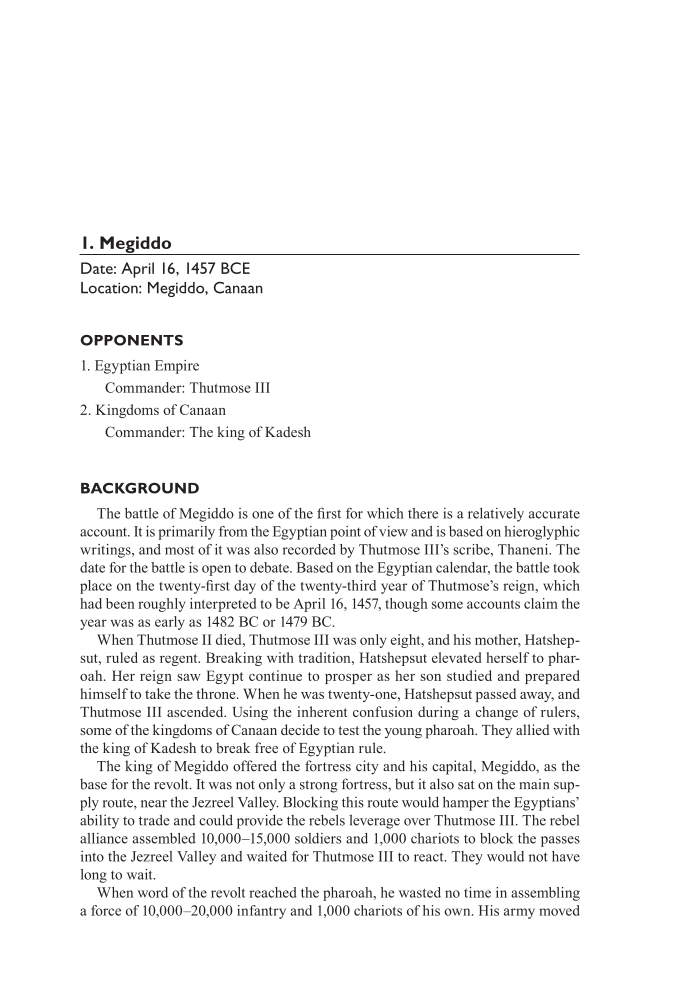1. Megiddo Date: April 16, 1457 BCE Location: Megiddo, Canaan OPPONENTS 1. Egyptian Empire Commander: Thutmose III 2. Kingdoms of Canaan Commander: The king of Kadesh BACKGROUND The battle of Megiddo is one of the first for which there is a relatively accurate account. It is primarily from the Egyptian point of view and is based on hieroglyphic writings, and most of it was also recorded by Thutmose III’s scribe, Thaneni. The date for the battle is open to debate. Based on the Egyptian calendar, the battle took place on the twenty- first day of the twenty- third year of Thutmose’s reign, which had been roughly interpreted to be April 16, 1457, though some accounts claim the year was as early as 1482 BC or 1479 BC. When Thutmose II died, Thutmose III was only eight, and his mother, Hatshep- sut, ruled as regent. Breaking with tradition, Hatshepsut elevated herself to phar- oah. Her reign saw Egypt continue to prosper as her son studied and prepared himself to take the throne. When he was twenty- one, Hatshepsut passed away, and Thutmose III ascended. Using the inherent confusion during a change of rulers, some of the kingdoms of Canaan decide to test the young pharoah. They allied with the king of Kadesh to break free of Egyptian rule. The king of Megiddo offered the fortress city and his capital, Megiddo, as the base for the revolt. It was not only a strong fortress, but it also sat on the main sup- ply route, near the Jezreel Valley. Blocking this route would hamper the Egyptians’ ability to trade and could provide the rebels leverage over Thutmose III. The rebel alliance assembled 10,000–15,000 soldiers and 1,000 chariots to block the passes into the Jezreel Valley and waited for Thutmose III to react. They would not have long to wait. When word of the revolt reached the pharoah, he wasted no time in assembling a force of 10,000–20,000 infantry and 1,000 chariots of his own. His army moved
Document Details My Account Print multiple pages
Print
You have printed 0 times in the last 24 hours.
Your print count will reset on at .
You may print 0 more time(s) before then.
You may print a maximum of 0 pages at a time.





















































































































































































































































































































































































































